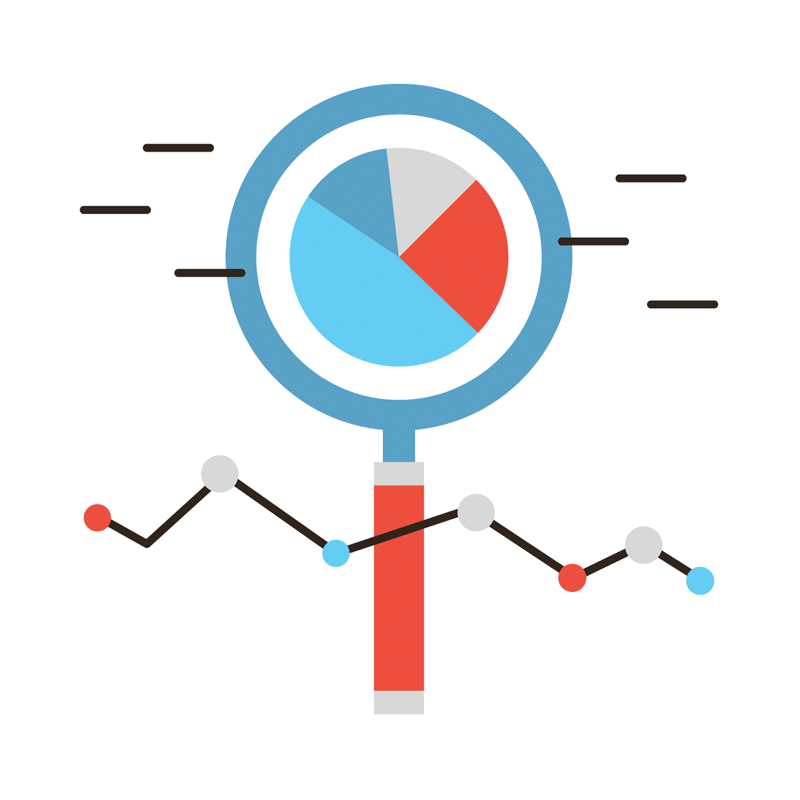
In the early years of digital marketing SEO, a marketer’s job was to identify keywords that would align with exact search engine queries.
In other words, Google and other search engines would try to create exact matches word for word, looking solely at the verbiage typed into a search bar, instead of the intent or concept behind these words. As a result, if you conducted a search for “digital marketing SEO services,” Google would return results that had this exact phrase predominantly displayed on any given website.
The Start of Google Knowledge Graph
However, this all changed in 2012 when Google introduced the Knowledge Graph. The rise of the Knowledge Graph indicated that Google was shifting to understand a searcher’s intent – not their exact turn of phrase – and it ushered in a new era of obtaining relevant information.
Just seven months after the Knowledge Graph was introduced, this new tool covered an estimated 570 million entities and 18 billion facts. Additionally, by mid-2016, Google reported that the Knowledge Graph contained 70 billion facts and answered a third of the search engine’s 100 billion monthly searches. By 2020, this had grown to 500 billion facts on 5 billion entities.
Clearly, the Knowledge Graph is prime real estate when it comes to propelling your company’s visibility and brand recognition. However, with billions of potential competitors vying for a presence in the Knowledge Graph, a little knowledge of what can set your company apart goes a long way.
So, when focusing on your digital marketing SEO, and pinpointing ways to create a global internet presence, consider the following guidelines regarding Google SEO services. Learn more about the Google Knowledge Graph, and what you need to know to utilize this valuable tool.
What is the Google Knowledge Graph?
The Google Knowledge Graph is a database of billions of facts that is utilized to answer search engine questions on people, places, things, and even concepts. Like an encyclopedia, the Knowledge Graph answers search queries with detailed and relevant info that goes far beyond finding sites or information that simply contains a few keywords.
For example, if you Google “Who was George Washington,” you’ll be directed to several informational panels that outline a summary, and key details such as birthdate, presidential term, spouse and family, and much more.
It’s important to note the placement of these results, as well. This Google Knowledge Graph information takes up the bulk of the screen, including the “top fold” of the web results, and the sidebar. You may have to scroll down to find additional links on the subject, as this initial information dominates the search results page.
How Does the Knowledge Graph Results Compare to Rich Results?
The Knowledge Graph and rich results are very similar. Like Knowledge Graph results, rich results go beyond the standard list of blue links, and can include carousels, images, or other non-textual elements.
Therefore, the big difference between the two is a business owner or user’s content control. You generally can’t alter rich results. However, you can control the information in your branded Knowledge Graph panels. This groups together essential data such as your company’s fundamental description, logo, and social media and website links.
How Can You Optimize for SEO with Google Knowledge Graphs?
Small and local businesses arguably have the most to gain from the Knowledge Graphs, because they are inherently the primary source of information on their business and can increase their visibility exponentially with a few smart moves.
Google can include a wealth of information on your Knowledge Graph card. Such as your location, hours of operation, phone numbers and contact info, directions, popular times of operation, and much more.
Start with these important steps to get the ball rolling on enhancing your Knowledge Graph card.
1) Enhance your Schema markup
Schema markup on your webpage creates an enhanced description of data that makes your site easier to find in web results. Used by all the top search engines, you can easily review and test this aspect of your site through Google’s comprehensive guide of the types of markup to include.
2) Create a Wikipedia page
The Knowledge Graph card is directly tied to Wikipedia information, and Google frequently uses Wikipedia as a resource to connect to viable sites and resources. So, if your company does not have a Wikipedia page, start creating one. Additionally, you can include an entry in Wikidata to maximize your presence.
3) Make sure you optimize Google My Business
Google My Business is a powerful resource for small businesses, as it helps users identify, locate, and even find directions to your brick-and-mortar business. Setting up your Google Business profile is free and easy, and you can get started via Google’s step-by-step guide.
4) Create and verify your social media accounts
Google doesn’t just use your website to create accurate search results. It also relies on your social media accounts. Make sure all of your social media accounts are verified and active, with multiple interactions with fans and customers. This will help expand your visibility in Google’s eye.
5) Get expert help from a Google SEO service
Increasing your visibility and placement on the Google Knowledge Graph, or in any variation of search results requires expertise in the modern era of digital marketing SEO is essential. There are countless moving parts that determine where your business will fall among billions of search results. Including content to placement on other sites and services like Wikipedia or Google My Business.
The best move a business can make to optimize visibility is to partner with an expert in digital marketing SEO services like ContentFirst Marketing. We have the expertise and resources to provide measurable results that enhance your visibility, and your brand recognition and loyalty.
Expert SEO Services with ContentFirst Marketing
Let’s get started on ensuring that your business is at the top of the radar when it comes to your competition.
Our marketing team can help with the intricacies of the Google Knowledge Graph to the details of digital marketing SEO. ContentFirst Marketing is your resource for growing your business and achieving your goals.


